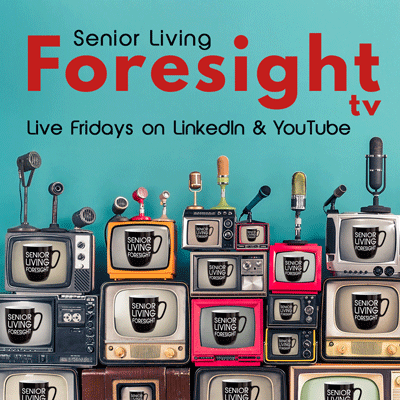By Steve Moran
This is part 4 of Steve’s response to the recent Washington Post series about assisted living (part 1, part 2, part 3).
I am unusually worked up by the Washington Post series because I am watching it, in real time, have a powerful impact on a friend and his family who have been exploring senior living for his aging parents.
A few weeks ago — way before the Post articles came out — I got this text message:
So, I’m shopping for senior living for my parents
What a shitty experience
This the home page of their local XYZ (large assisted living company) senior living community.
It is horrible and unhelpful.
All forms and pop ups
Nothing about the care, people, etc
We continued to talk about solutions for his parents, who are still at least partly competent and not at all sure they want to move into senior living anyway.
Context
This friend is someone who frequently does business in and around the world of senior living. It is far from his only business, but he knows it fairly well. He wants to love it, maybe even does love it, but he is not sure he can trust it with his parents.
Then Came the Story
Then this story came out. … More text messages and phone calls.
He simply doesn’t trust the industry with the safety and security of his parents in their last years. But it’s not just the article, it’s his overall shopping experience. It felt like the whole experience was about extracting money, not helping him and his family figure out what is right for their situation.
I Believe …
I believe that his parents will be better off and happier in senior living then they will be living at home with help.
I believe that as their lives wind down, they will have more friendships, more support for life experiences that will enrich their lives.
I believe that if they move into senior living, their kids will worry less about how Mom and Dad are doing.
I believe they will be safer than at home.
And Yet …
We are failing too often and making excuses about it. We don’t spend enough time really thinking about the resident experience and the buyer’s journey. Recently we had a Foresight TV episode with Jamison Gosselin, who talked about the buyer’s journey providing powerful insights. But what no one has really studied are the people who start searching and then never move in. Why did they say no to senior living? We need to explore this.
We need to say we have zero tolerance for residents wandering and dying, while at the same time recognizing that it does happen.
We need to have better answers when these tragedies occur than s%`# happens.
I don’t want my friend to make the wrong decision for the wrong reasons.
This is part 4 of Steve’s response to the recent Washington Post series about assisted living (part 1, part 2, part 3).






test
Hi Steve,
This is a very insightful article. We in Senior Living need to get better at providing great experiences for potential families. This includes providing them with resources and information, not just a laundry list of services. I have toured many communities and mostly find that the sales people are more concerned with “closing the sale” (I HATE that mentality!) than addressing my needs. At Hearthstone we always taught our team that they need to have empathy for the family members and realize that just the act of shopping for senior living feels like a loss to many. Thanks for the reminder of how important this is.